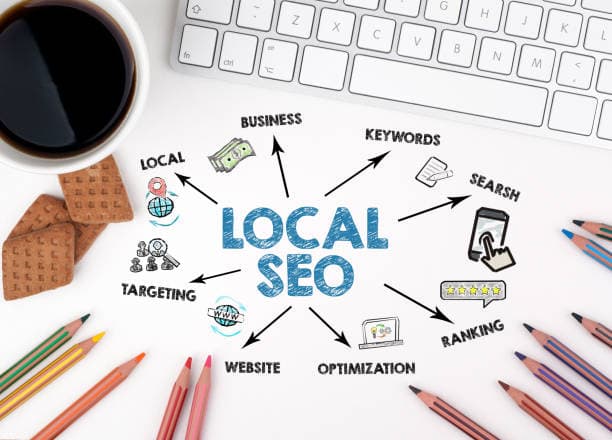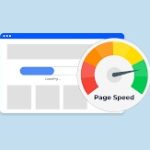In a world where customers and businesses connect primarily through the internet, deciding between Google Ads and SEO strategy can be pivotal for success. Both methods serve distinct purposes: while Google Ads brings immediate visibility through search ads and display advertising, search engine optimization (SEO) grows your site’s organic traffic gradually by boosting your ranking in search queries. Whether you’re promoting products, services, or a broad brand identity, choosing the right channel can affect your budgets, conversion rates, and online visibility. In this blog post, we’ll help you understand the pros and cons of both approaches, guiding you toward an effective, sustainable digital marketing plan.

Understanding Google Ads
What are Google Ads?
Google Ads is a Search Engine Marketing (SEM) platform enabling business owners to place text, display, and even videos in front of potential customers. These ads appear on search engines and affiliated websites. Advertisers bid on keywords relevant to their products or services, paying only when someone clicks—commonly referred to as “pay-per-click” (PPC) advertising.
How Google Ads Work
When users enter search terms that match your targeted keyword or phrase, your ad competes against others in an auction. Factors like quality score, ad relevance, and bid amount determine whether your ad shows on the results page and in which position. By using images, text, or videos, you can capture user interest and direct them to your site, typically aiming for immediate conversions like phone calls, form fills, or purchases.
Immediate Visibility Benefits
With Google Ads, your site can appear on the first page of Google Search results within hours. This is especially helpful for newly launched websites lacking domain authority or recognized brand names. If your target market is time-sensitive—like short-term promotions, seasonal deals, or urgent services—immediate traffic from paid search can keep you competitive.
Advantages of Google Ads
Targeted Marketing Capabilities
Google Ads offers a wide range of targeting options—like location, language, time of day, or even device type. Additionally, advanced features like Ads Personalization can match your ads to user interest signals, maximizing conversion rates. If you know your audience is more active on mobile devices in the evening, you can optimize bids or ad scheduling for those peak times.
Measurable Performance Metrics
One of the biggest perks of Google Ads is real-time tracking and detailed reporting. Tools like Google Analytics or conversion tracking codes let you see how many clicks, impressions, and actual leads or purchases come from each ad group. This makes it easy to calculate ROI, refine bidding strategies, and adapt your marketing approach quickly.
Flexibility in Budgeting and Promotions
Google Ads scale to any advertising budget. If you’re uncertain about your strategy, you can start small and measure results. As you gain confidence, you can ramp up spending to increase maximum visibility. This control helps you allocate resources effectively—if your campaign isn’t meeting goals, pivot or pause to prevent wasted effort.
Disadvantages of Google Ads
Higher Costs in Competitive Industries
If your sector has fierce competition—like law, insurance, or finance—clicks can become quite expensive. With budgets quickly escalating, some business owners might struggle to sustain auctions for certain keyword phrases, impacting the cost-effectiveness of your approach.
Potential for Click Fraud
While Google invests heavily in preventing invalid clicks, there’s still a risk of your ads receiving fraudulent clicks—like malicious competitors or automated bots. Over time, these unqualified clicks drain your budget, though active monitoring and tools help mitigate these problems.
Temporary Results
without Ongoing Investment Once you pause your ads or run out of budget, your presence in paid search disappears instantly. This stark difference from SEO efforts can hamper consistent online visibility if you don’t maintain your ad spend. It’s like renting advertising space—stop paying, and your billboard comes down.
Understanding SEO
What is SEO?
Search engine optimization (SEO) is the practice of optimizing your content, site structure, and off-page signals (like links) to improve your domain’s credibility for relevant searches. By integrating target keywords into high-quality content—plus addressing technical issues and building authority with external links—your site can rank higher in organic search results.
How SEO Works
SEO relies on how search engines like Google or Bing crawl, index, and interpret your web pages. By following SEO best practices—such as keyword research, content creation with user intent, and good site architecture—search engine algorithms become more confident your site matches relevant search queries. This process extends beyond the domain to include off-page SEO, social signals, and a stable technical foundation.
Importance of Organic Traffic
With organic traffic, users discover your site through search results, typically having greater trust in these non-sponsored links. That trust often translates to better brand perception, improved conversion rates, and a lower bounce rate. Over time, consistent organic traffic fosters brand loyalty without requiring a perpetual ad budget.
Advantages of SEO
Long-Term Traffic Growth
While it takes more time to build momentum, SEO can pay dividends long after you publish content or secure a quality link. Pages that rank well consistently draw qualified traffic for months or years. If your SEO efforts are robust, you can reduce your reliance on paid ads for consistent leads or sales.
Cost-Effectiveness over Time
Although initial setup—like blogs, image optimizations, or technical improvements—can demand effort, the ongoing maintenance costs typically pale in comparison to monthly Google Ads budgets. Once your site ranks well for certain search queries, you can enjoy free or low-cost search traffic that yields a positive ROI over time.

Enhanced Consumer Trust and Credibility
Searchers often trust the top organic listings, viewing them as more genuine compared to ads. Achieving prominent positions signals domain authority and brand reliability, especially for brick-and-mortar locations where local SEO** can highlight your presence in location-based search results. Over time, strong organic rankings translate to better brand awareness and improved user experiences.
Disadvantages of SEO
Slower Results Compared to Paid Ads
Ranking improvements can take weeks or even months. If your site has technical issues, lacks relevant high-quality content, or faces tough competition, achieving your desired search ranking can demand extensive effort.
Requires Continuous Optimization
As search engine algorithms evolve and new competitor content surfaces, your site must keep pace. Issues like broken links, outdated blogs, or keyword stuffing can degrade your ranking, meaning a cycle of ongoing refinement is necessary for consistent gains.
Algorithm Changes Affecting Rankings
Google’s core updates can drastically shift how your pages perform. A once-successful approach may falter if search engine updates devalue certain link types, content forms, or user experience factors. Being reliant on “free” traffic also means you’re subject to the whims of major search engines.
When to Choose Google Ads
Need for Immediate Visibility
If you want leads quickly—perhaps you’re launching a new product or short-term promotion—Google Ads is your best bet. Paid ads can push your brand to the first page of results almost immediately, ensuring you capture new audiences at the moment of interest.
Launching a New Product or Service
New businesses or product lines often lack brand equity, making it tough to appear in organic results right away. A well-targeted Google Ads campaign can fill that gap while your SEO strategy matures in the background. You can highlight new lines or features with tailored ad copy, images, or even videos that quickly drive interest.
Targeting Seasonal Promotions
Seasonal campaigns—like Black Friday or Valentine’s Day specials—often require a short, high-impact push. Google Ads allows you to boost relevant offers during a defined period, adjusting your budgets or bidding for maximum impact at peak times.
When to Choose SEO
Focusing on Long-term Growth
For more stable, ongoing site traffic, SEO is a wise investment. Over time, building your domain authority and producing quality content fosters reliable, cost-effective leads. This approach suits business owners looking to build brand presence for the indefinite future without the recurring cost of paid ads.
Building Online Authority
Search engine results can reflect your brand credibility. Ranking well for significant search terms fosters trust among consumers and search engine algorithms. If you have the resources to produce in-depth content, handle technical aspects, and cultivate links with your community, an organic approach ultimately pays off.

Advanced SEO Content and Tools: A Deeper Look
Search engine optimization strategy goes beyond basic on-page adjustments; it requires ongoing effort, thoughtful content for users, and an in-depth understanding of search volume, search intent, and commercial intent. Whether you’re focusing on organic search traffic or building your presence on Google Business Profile, crafting valuable content that addresses relevant search terms is crucial. Using an SEO tool—like an SEO checker or advanced keyword research tool—helps you analyze keyword difficulty, identify high-quality domains for external links, and manage your site’s internal links.
When targeting organic visibility, track SEO metrics like search engine ranking, impressions, and conversions to gauge how well your search strategies are working. This approach is a key part of any long-term strategy, as it aligns with the evolving behavior of search engine crawlers (or search bots). For instance, the search engines market share might shift over time, requiring periodic adaptation. Publications such as Search Engine Watch, Search Engine Land & SMX, and the Google Webmaster Central Blog offer insights into the latest trends that an SEO practitioner can leverage.
Optimizing for search means focusing on body content, meta tags, and internal links in your blog post or site pages, ensuring the slugInternal links structure is consistent with your keyword targets. Tactics like Common image SEO tactics—optimizing image descriptions or sizing—also improve your search visibility. Meanwhile, advanced tools can calculate keyword difficulty score or run a Keyword Overview to gauge your best starting keyword. Maintaining a well-written and well-presented blog post featuring original content fosters user trust, reduces bounce rate, and strengthens your domain authority.
Off-page, strategies like product recommendations on external sites or building relevant, high-quality domains linking back to you help mitigate severe SEO issues. For marketing support, a project management tool can coordinate tasks like online reputation management, social media management, and Video SEO or Common video SEO tactics for more specialized efforts. Integrating AI or advanced analytics platforms—like those recommended in the Technology & Marketing Law Blog or Google Blog—can further enhance the user experience and refine your keyword metrics. By consistently producing helpful content that aligns with your target keywords, you’ll foster strong organic search rankings—a testament to the synergy of quality content and best-practice technical optimization.
Conclusion
Choosing between Google Ads and SEO ultimately depends on your business priorities. Google Ads delivers immediate traffic, flexible budgets, and precise targeting—ideal for urgent campaigns or newly launched products. On the other hand, SEO fosters organic traffic, establishing long-term visibility and credibility with consistent, quality content. For many brands, a balanced approach—mixing short-term gains from advertising with stable, long-term growth from search engine optimization—works best. Assess your timeline, resources, and overall marketing objectives. You’ll achieve a well-rounded strategy built for ongoing success by aligning each approach with your goals.
Tags




